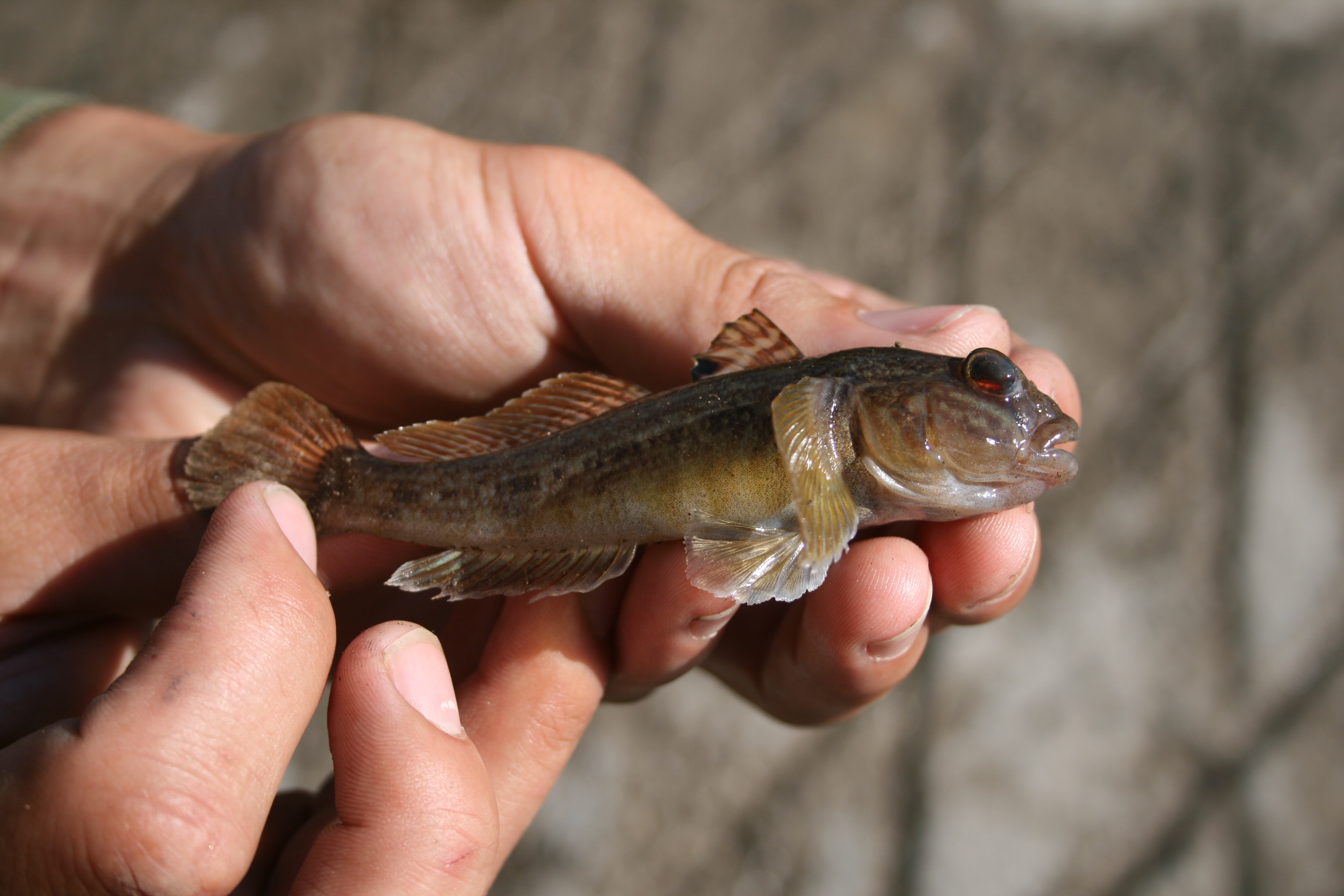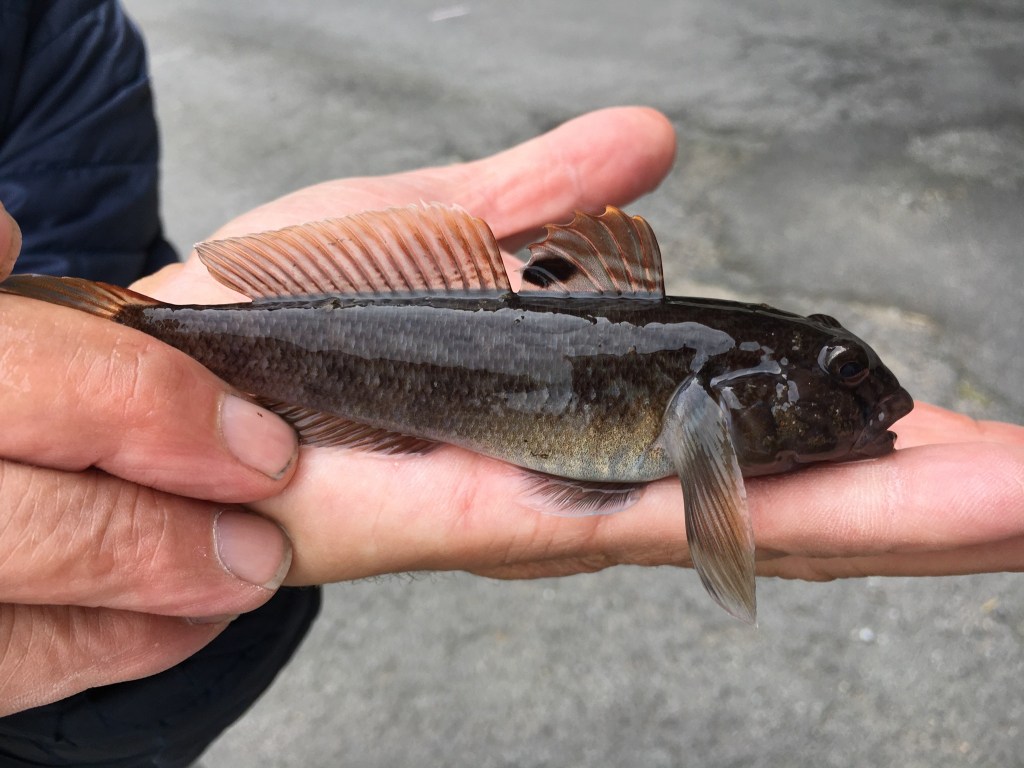
Careful with easy assumptions — their bitter realities often bite much deeper than we’d imagine.
Case in point: Gobies in Lake Champlain.
Hold on, quick clarification: Shawn Good, Fisheries Scientist for the Vermont Fish and Wildlife Department said there is presently no evidence of gobies in this spectacular fishery straddling the border of his state and New York.
However, in his 26 years of lake management, Good has never been more concerned about a threat that’s literally knocking at Champlain’s door. Oddly, this apprehension flies in the face of a common sport fishing sentiment and that is precisely the point Good so adamantly stresses.
“It’s kind of frustrating for biologists in the Champlain region to strike up a conversation with a bass angler, who will say, ‘I can’t wait for gobies to get into Champlain,’” Good said. “That’s really being driven by news stories of bass tournaments (with fish that have reached exceptional sizes by eating gobies).
“There’s no denying that gobies grow big smallmouth bass. You see it in Lake St. Clair where they’re catching 6 1/2– to 7-pounders with regularity. People see that and they’re so focused on what that means for them as an angler wanting to catch really big bass that they think, ‘If gobies can grow bass that big in those locations, they would do wonders for Lake Champlain.’”
Drop gobies into the mix and things will improve, some say. Perhaps, some good could come of that hypothetical, but negative impact is all but guaranteed.
“That’s a really short-sighted view,” Good said of goby envy. “I’m sure gobies would grow big bass on Lake Champlain, just like they do on other waters — but at what cost? That’s the part that we’re concerned about.”
CLARIFICATION NEEDED
As Good explained, the goby misconception, is understandable. Folks see pictures of those bulging football shaped smallmouth plucked from Lake Ontario and the St. Lawrence River and immediately envision the same for Champlain.
Piles of hefty forage equals super-sized gamefish, right? Well, yeah, but…
“We want to dispel that myth and provide a bigger picture,” Good said. “While it’s true that gobies can grow bigger fish, there are tradeoffs that you have to understand can come along with that.”
It’s the quintessential give-and-take; only here, the deal’s nowhere near as good as it may sound.
“What people are seeing in these really big fish could become true for Champlain, but it could also mean fewer fish,” Good said. “The nesting success could decrease, so you could have less recruitment (juveniles reaching adult stage) and have fewer, but bigger fish.
“I’m not sure that’s a tradeoff we really want to entertain on Champlain when we’re known for being so diverse and productive in the first place.”

THE THREAT
The round goby (Neogobius melanostomus) entered the St. Clair River (linking Lake Huron to Lake St. Clair) in 1990 via bilge water from oceangoing cargo ships. By the late 90’s these invasives of Eurasion origin had spread throughout the Great Lakes, the St. Lawrence River and several inland waters linked by rivers and canals.
Bearing some resemblance to native sculpin, gobies grow much larger — up to 10 inches. To distinguish smaller specimens, flip them over and you’ll see that, while the sculpin has a pair of pelvic fins, the goby sports a single fused pelvic fin that allows the fish to perch on rocks and other bottom positions.
These non-natives have exploded in numbers and, while that’s a good thing for smallmouth and anglers who like catching the resulting brown butterballs, gobies constitute a serious environmental threat. Competing with native forage species for reproduction and feeding space, gobies are notorious nest raiders.
Lacking a swim bladder, gobies are strictly bottom feeders, which puts fish eggs high on their dietary preference. As Good notes, this threatens Champlain’s multiple sport fish species — including endangered sturgeon and a lake trout population whose recent recovery has prompted significant stocking decreases.
Bass, of course, would not escape such ravages. As Good points out, removing a bed fish for tournament competition, or simply a catch-photo-release, would give gobies a window of opportunity that they’d gladly exploit.
“A handful of gobies can consume almost all of the eggs in a bass nest in 15 minutes,” Good said. “That’s our No. 1 concern — decreased nest success and fry survival.”
CLEAR AND PRESENT DANGER
Lake Champlain may seem like a pretty good jog from the goby-infested Great Lakes Region, but the Richelieu River, which runs out of the lake’s upper end, flows north through southeastern Quebec and meets the St. Lawrence River at Saint-Joseph-de-Sorel. Ever the expansive type, gobies have pushed their way well into the Richelieu.
“The Richelieu River is a lock-and-canal system built alongside and, often part of a natural river system, which gets the boats around the change in elevation,” Good said. “The gobies are right at the first dam (coming from the north). There are only a couple more dams and it’s about 40-50 river miles between there and Lake Champlain.
“If the gobies make it beyond those three dams on the Richelieu River, they will be in Champlain.”
Moreover, the Champlain Canal — a manmade navigational waterway — links the lake’s southern end to the Hudson River for Atlantic Ocean access. With the Erie Canal/Mohawk River connecting the Hudson to the Great Lakes, gobies have also approached from Champlain’s south.
“In 2021, the State of New York confirmed the presence of gobies in the Hudson River, in Albany,” Good said. “Now, they’re just below Lock C-1 on the Champlain Canal. It’s about 60 miles of lock system between Albany and Lake Champlain and there are 11 locks in that stretch.”
This is the point where some might think we’re on the precipice of an exciting new chapter in Champlain’s history. Well, by definition, precipice means a tall rock face or cliff. Nice view, but you get too close to a precipice and you chance a great fall.
Let that sink in for a moment.
A DYNASTY AT RISK
Ask anglers throughout the Bassmaster Elite field to list their favorite lakes and you’ll frequently hear Champlain in the top-5, if not their No. 1. That’s no coincidence.
The fact is, Champlain’s enviable blend of quantity and quality in the smallmouth and largemouth populations clearly shows that these prized sport fish have plenty to eat. At some level, gobies might be appreciated, but they are not needed.
Presently, the buffet including crayfish, darters, sculpin, rainbow smelt, alewives, emerald shiners and yellow perch keeps bass well fed. As Good observes, this varied and diverse diet that can fluctuate daily and seasonally ensures the bass remain healthier than a diet primarily comprising one item.
“Champlain has been long known for it’s quality bass fishery,” Good said. “It’s not producing 10- or 12-pound largemouth like a southern U.S. reservoir, but the overall quality and the number of limits it typically produces in any given tournament (is impressive).
“Even if you’re not a pro, you can come hear and catch 3- and 4-pounders in Lake Champlain because it has the productivity to sustain that level of fishery.”
The key? Balance — an ecological equilibrium that keeps the right amount of this and the right amount of that operating in harmonious unison.
Is Champlain perfect? What lake is?
Good’s point simply describes a fishery that’s been clicking at pretty pace for a lot of years. You let the party crashers through the door and they will not play nice with others.
ON GUARD
Addressing the issue at hand, Good said his agency, along with the New York Department of Environmental Conservation, the U.S. Geological Survey, and the U.S. Fish and Wildlife Service have engaged in a cooperative effort to work with state and local authorities to address the goby threat and, ideally, determine options to halt their progress and stave off potential ecological disaster by stonewalling these invaders.
In a NY DEC release, Dr. Eric Howe, Director of the Lake Champlain Basin Program, said: “The Lake Champlain Basin Program’s Aquatic Invasive Species Rapid Response Task Force continues to meet monthly with partners in New York, Vermont, and Quebec to coordinate round goby early detection monitoring and education and outreach efforts.
“We are committing resources to work with U.S. Geological Survey and U.S. Fish and Wildlife Service to conduct round goby environmental DNA, trawling, electrofishing and VHS sampling in the Champlain Canal system in 2023 and 2024.”
Howe added that the Lake Champlain watershed community is very concerned about round goby impacts to lake trout recovery, bass populations, and the fishing economy. LCBP’s highest priority, he said, is working in partnership with DEC and Canal Corporation to address the Champlain Canal as a pathway for aquatic invasive species introduction and spread.
As with any public fishery, intentionally introducing non-native species to new waters is illegal. Even in the remote chance that someone catches gobies for live bait use, dumping leftovers is a big no-no, not to mention environmentally reckless.
Bottom line: Despite all the “what ifs” and wishful thinking, gobies are not native to Lake Champlain and they do not belong. There’s simply too much at risk.
“In every case, a native fish community is always healthier than one that is infested with invasive species,” Good said. “It has evolved to have a balance between all the native fish species that belong in that community.
“You throw something in that doesn’t belong there and it upsets that balance and something always suffers.”





